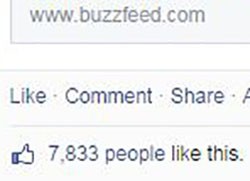
Whenever I see an article with a headline like the one I’ve just written, I can’t help but think about spam. Just like the unwelcome jangle of emails in your inbox that promise to reveal the secrets to dramatic weight loss, wrinkle-free skin and better erectile function, creating content to go viral on the internet seems like a hopeless fantasy. After all, it’s impossible to predict. It’s just dumb luck, isn’t it?
Well, maybe. BuzzFeed’s editorial director Jack Shepherd crowed in a recent article that the website has made a science of figuring out what people share. (A whopping 75 percent of BuzzFeed’s 130 million unique visitors arrive via social platforms – particularly Facebook.) Shepherd says that people mostly want to share things about themselves. “This isn’t as vain as it sounds,” he says, “Sharing something about yourself is often a statement about what you believe in, what causes or values you align yourself with, and what, in particular, you love and identify with.” Which all sounds very noble until you realize what he means is those highly unscientific (and sometimes just plain silly) personality quizzes BuzzFeed loves so much such as: “Which Sandwich Are You?”
Another thing you will notice about BuzzFeed is that while they while they do pieces with broad appeal (“Which Sandwich Are You?” being a case in point) there is also a lot of incredibly niche content on the site. One recent example: “14 Words That Have a Completely Different Meaning in Wolverhampton”. That’s because you are more likely to share something that your clique will strongly identify with; an inside joke that only you and your ilk will really understand.
Jonah Berger, a professor at the highly regarded Wharton School and author of a book called “Contagious: Why Things Catch On”, puts it a different way. He says that people share things that make them look good because people want to seem smart. “Before people share a piece of content, they evaluate its social currency,” he says. “The better it makes them look, the more likely they’ll be to pass it on.” In my experience as a journalist, editor and publisher people share things that present the best version of themselves to the world —a smarter, more empathetic, more thoughtful version.
One thing that both Shepherd and Berger agree on is the power of emotion. Together with a colleague, Berger analysed thousands of pieces of New York Times content for a study published in the starchy American Journal of Marketing and found that content that provokes an emotional response – surprise, awe or anger – is more likely to be shared.
But for all of the data crunching Berger says that quality is the ultimate arbiter of what is shared. Catchy headlines that include emotional tugs like “You Won’t Believe” or “This Will Make You Cry” aren’t enough. After all, there are plenty of cat videos that don’t go viral. “People love stories,” says Berger, “The more you see your story as part of a broader narrative, the better,” he says.
Which is good news for those of us who believe in the power of storytelling. It might be impossible to guarantee virality, but creating high-quality content that connects with people emotionally is probably as close to a secret formula as you’re likely to find.